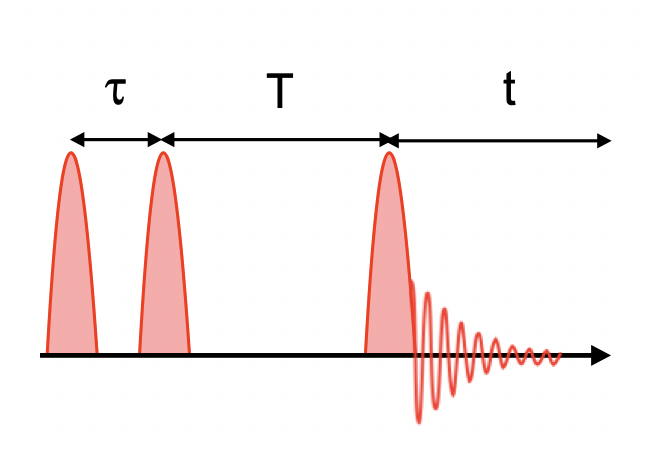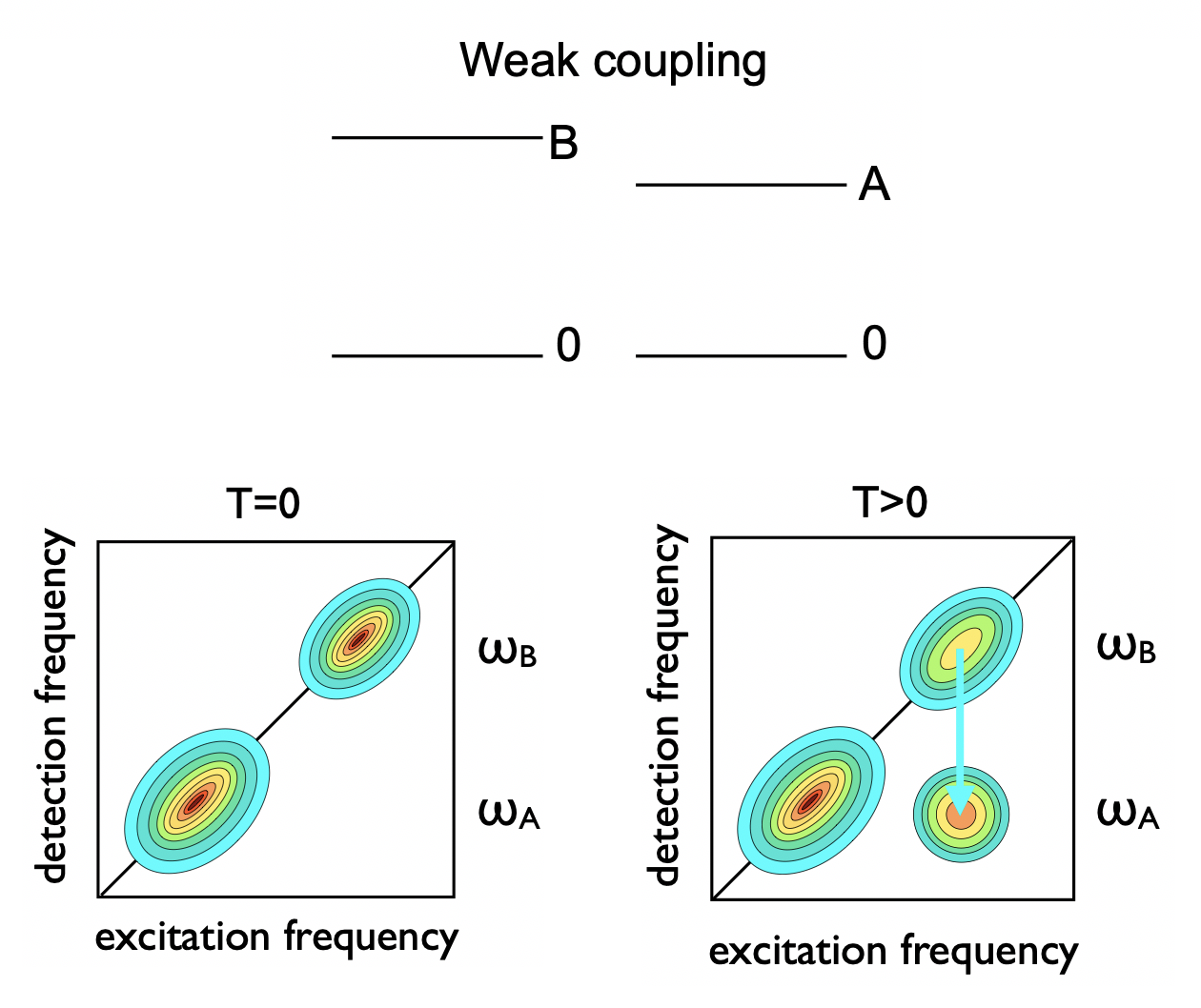Image provided by Dr. Yin Song
Multidimensional spectroscopy is a powerful tool for revealing electronic coupling and ultrafast dynamics in a wide range of systems.
Why Multidimensional Spectroscopy?
Most nonlinear spectroscopies are inherently one dimensional and as such cannot determine whether features in the linear absorption spectrum arise from electronic coupling between chromophores, or from inhomogeneous effects such as chromophore-protein interactions. The techniques of multidimensional Fourier transform spectroscopy have revolutionized nuclear magnetic resonance (NMR), making it an invaluable tool for determining high resolution structures of complicated biomolecules. NMR can also study dynamics, but on limited time scales. The techniques of multidimensional NMR have been extended into the infrared (IR) regime, providing insight into a wide range of problems from the hydrogen-bonding structure of water to the structure and folding of proteins. In contrast to the numerous theoretical and experimental 2DIR studies, there has been less 2DES. This can in part be attributed to the relatively more difficult experimental implementation of 2D Fourier transform spectroscopy at higher frequencies. 2DES is now being applied to a growing number of problems ranging from the study of solvation dynamics, to energy transfer in natural and artificial photosynthetic systems. Borrowing from the toolbox of multidimensional NMR, 2DES provides a direct view of the electronic couplings that drive excited state processes such as energy and charge transfer. By spreading the linear spectrum into two dimensions, 2DES exposes the connectivity of the system.
Pulse sequence for FT 2d Spectroscopy
In Fourier transform 2D spectroscopy a sequence of 3 laser pulses interacts with the sample, creating a 3rd order polarization that radiates a signal that is a function of the 3 time delays. Collection of the signal and Fourier transformation with respect to the 1st and 3rd delays yields the 2D spectrum at a given “waiting time” T.
Beyond 1D spectroscopy
FT 2D spectrum at T=0 separates homogeneous and inhomogeneous broadening that are indistinguishable in linear spectroscopy.
Spectral diffusion revealed
At later waiting times, the anti-diagonal broadening of the 2D spectrum reflects spectral diffusion processes.
2D Spectroscopy reveals electronic coupling and energy transfer
2D spectroscopy also provides information about electronic coupling and energy transfer processes. At T=0 a weakly coupled system shows only diagonal peaks. At later times T>0, the emergence of cross-peaks reports on energy transfer. In contrast, a strongly-coupled system exhibits cross-peaks at T=0, and the T-dependence reveals coherence and population transfer.





